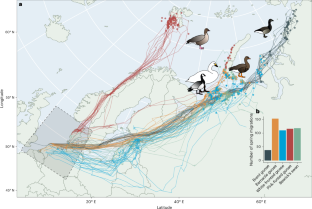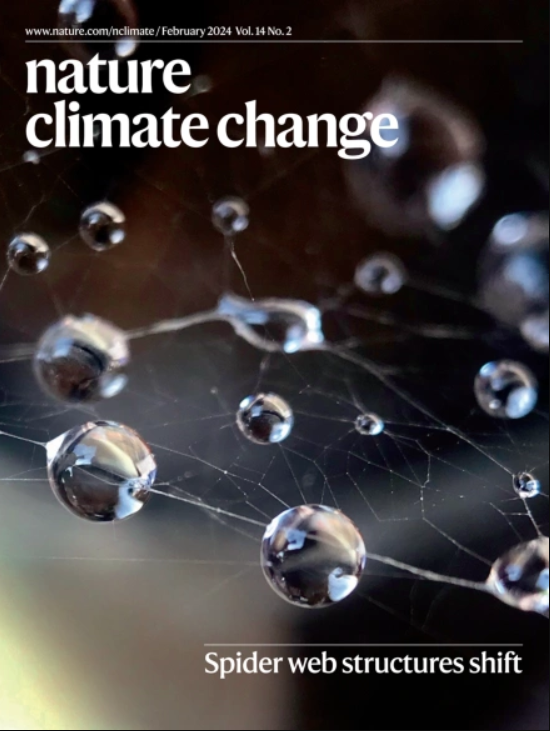Scope for waterfowl to speed up migration to a warming Arctic
IF 27.1
1区 地球科学
Q1 ENVIRONMENTAL SCIENCES
引用次数: 0
Abstract
Climate change is causing an earlier onset of spring, requiring migratory birds to accelerate their spring migration to avoid arriving late at the breeding grounds. This acceleration hinges on the capacity to shorten the time spent building energy reserves (fuelling) for migratory flight, which is currently thought to be very limited. Combining multiyear global-positioning-system tracking and body mass data from five large-bodied Arctic-breeding waterfowl species, we demonstrate that there is considerable scope for the studied species to migrate faster by shortening the fuelling time, either before departure or at stopovers. With the exception of one species (brent goose), populations were able to largely or fully offset their spring departure date with subsequent fuelling time en route. Still, under the current rates of Arctic warming, this may allow them to mediate only a few more decades of spring advance by migrating faster. The authors combine tracking and body mass data from five migratory waterfowl species to understand their capacity to accelerate migration in response to earlier spring. They show considerable scope for faster migration by reducing the fuelling time before departure and subsequently on stopovers


水禽加速迁徙到变暖的北极
气候变化导致春天提前到来,这就要求候鸟加快春季迁徙,以避免晚到繁殖地。这种加速取决于是否有能力缩短为迁徙飞行建立能量储备(加油)所花费的时间,而目前人们认为这是非常有限的。结合多年的全球定位系统跟踪和五种大型北极繁殖水禽的体重数据,我们证明,通过缩短出发前或中途停留的加油时间,所研究的物种有相当大的空间可以更快地迁移。除了一种鹅(布兰特鹅)外,种群能够在很大程度上或完全抵消它们的春季出发日期,随后在途中加油时间。尽管如此,在目前北极变暖的速度下,这可能只允许它们通过更快的迁徙来调节几十年的春季前进。
本文章由计算机程序翻译,如有差异,请以英文原文为准。
求助全文
约1分钟内获得全文
求助全文
来源期刊

Nature Climate Change
ENVIRONMENTAL SCIENCES-METEOROLOGY & ATMOSPHERIC SCIENCES
CiteScore
40.30
自引率
1.60%
发文量
267
审稿时长
4-8 weeks
期刊介绍:
Nature Climate Change is dedicated to addressing the scientific challenge of understanding Earth's changing climate and its societal implications. As a monthly journal, it publishes significant and cutting-edge research on the nature, causes, and impacts of global climate change, as well as its implications for the economy, policy, and the world at large.
The journal publishes original research spanning the natural and social sciences, synthesizing interdisciplinary research to provide a comprehensive understanding of climate change. It upholds the high standards set by all Nature-branded journals, ensuring top-tier original research through a fair and rigorous review process, broad readership access, high standards of copy editing and production, rapid publication, and independence from academic societies and other vested interests.
Nature Climate Change serves as a platform for discussion among experts, publishing opinion, analysis, and review articles. It also features Research Highlights to highlight important developments in the field and original reporting from renowned science journalists in the form of feature articles.
Topics covered in the journal include adaptation, atmospheric science, ecology, economics, energy, impacts and vulnerability, mitigation, oceanography, policy, sociology, and sustainability, among others.
 求助内容:
求助内容: 应助结果提醒方式:
应助结果提醒方式:


